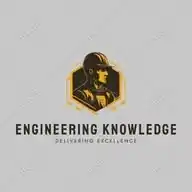
Mechanical Engineering World
May 22, 2025 at 12:12 AM
⏩ Electrical safety handbook
⏩ Download handbook: https://lnkd.in/eSKsddDN
👉 A confined space is an area that is not designed for continuous human occupancy, has limited or restricted means for entry or exit, and is large enough for a person to enter and perform work. These spaces can present significant safety hazards due to their structure, contents, or atmosphere.
Examples include tanks, silos, tunnels, pipelines, vessels, manholes, sewers, and storage bins.
⏩ Handbook of health and safety in construction site
⏩ Download Handbook: https://lnkd.in/gA3tTJ3y
Confined spaces are categorized into two types:
1️⃣ Non-permit confined spaces: Do not contain or have the potential to contain hazards capable of causing death or serious harm.
2️⃣ Permit-required confined spaces (PRCS): Contain or may contain serious hazards such as:
Hazardous atmospheres (e.g., lack of oxygen, toxic gases, flammable vapors)
Engulfment risks (e.g., loose materials like grain or sand)
Internal configurations that can trap or asphyxiate (e.g., sloped walls, narrow spaces)
Any other recognized serious safety or health hazard
⏩ Fundamentals of health and safety handbook
⏩ Download Handbook: https://lnkd.in/gvzNncP3
3️⃣ Hazards associated with confined spaces include:
💠 Oxygen deficiency or enrichment
💠 Toxic or flammable atmospheres
💠 Physical hazards (e.g., heat, mechanical equipment, engulfment)
💠 Limited visibility and movement
⏩ Positive displacement pumps handbook
⏩ Download Handbook: https://lnkd.in/gT5dF8pv
4️⃣ Precautions involve:
💠 Conducting risk assessments
💠 Air monitoring
💠 Ventilation
💠 Using personal protective equipment (PPE)
💠 Having a permit system
💠 Implementing emergency rescue plans
Proper training, entry permits, and monitoring are essential for safely working in confined spaces.
👍
❤️
🙏
22